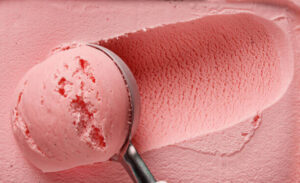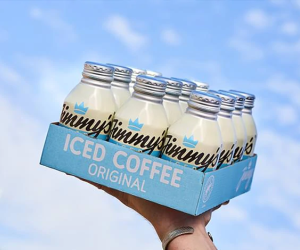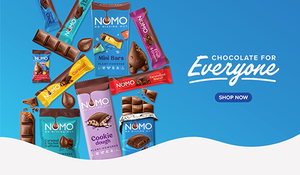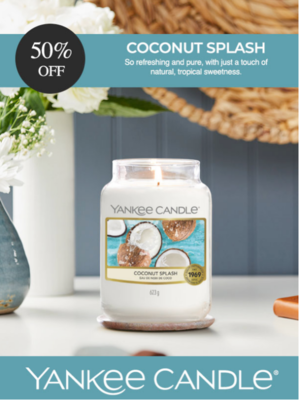Keep homemade ice cream fresh with our storage hints and tips! Prevent freezer burn, preserve creamy texture, and enjoy the delicious flavours in every scoop!
There’s something truly special about making ice cream from scratch. It’s a unique pleasure that comes with a real sense of accomplishment, knowing you’ve created something delicious with your own hands.
You have the freedom to customise flavours to your heart’s content, use fresh ingredients, and experiment with different textures — from velvety smooth to wonderfully chunky.
And then there’s the joy of tasting that first spoonful; the creamy texture, the intense flavours, and the freshness that any shop-bought option can’t match.
Homemade ice cream is a treat for all the senses, however, there’s one common problem that can quickly spoil the homemade ice cream experience – the dreaded freezer burn!
This frustrating issue occurs when air gets to the surface of the ice cream, causing dehydration and the formation of ice crystals. Freezer burn can strike even the most carefully crafted ice cream, taking the delicious to disappointing.
In this article, we’ll share our tips and guidance on how you can avoid freezer burn on your homemade ice cream, providing insights into the science of freezer burn and tips, and best practices to avoid it.
Impact of Freezer Burn on Texture and Flavour
Freezer burn can dramatically change the texture of your ice cream, transforming it from smooth and creamy to icy and grainy.
It doesn’t just stop there; freezer burn also affects the flavour, often resulting in ice cream that tastes stale, bland, or even slightly off. All that effort put into creating the perfect batch can feel wasted.
Providing Tips for Storage
Having had the experience of the joy of crafting a delicious homemade ice cream only to have the disappointment of finding it icy and affected by freezer burn, we want to share our experiences and practical tips on how to best avoid this common problem occurring for you.
With the right storage techniques, you can preserve your homemade creation’s creamy texture and delicious flavour for longer, ensuring every scoop is as delicious as the first.
Understanding Freezer Burn – The Nemesis of Ice Cream
While creating homemade ice cream, you’ll learn that there is quite a science to the process. There needs to be a balance of many elements.
The following points will guide you on how each aspect can affect the outcome.
Definition of Freezer Burn:
 Freezer burn is a condition that occurs when frozen food, including ice cream, loses moisture and undergoes oxidation due to exposure to air. This process causes the food to dry out and develop unappealing changes in texture, flavour, and appearance.
Freezer burn is a condition that occurs when frozen food, including ice cream, loses moisture and undergoes oxidation due to exposure to air. This process causes the food to dry out and develop unappealing changes in texture, flavour, and appearance.
In the case of ice cream, it can quickly ruin all your hard work by making it less enjoyable.
How Freezer Burn Occurs:
The science behind freezer burn is relatively simple: when ice cream is exposed to air in the freezer, the water molecules within the ice cream begin to evaporate and form ice crystals on the surface. This usually happens when the ice cream is stored improperly, such as in a loosely sealed container, or when it experiences fluctuating temperatures in the freezer.
As a result, the surface of the ice cream dries out, leading to that dreaded freezer burn.
Effects on Texture, Flavour, and Appearance:
 Freezer burn has a noticeable impact on the texture of ice cream, making it gritty or icy rather than the smooth and creamy treat you intended. Those ice crystals that form on the surface disrupt the texture, creating an unpleasant eating experience.
Freezer burn has a noticeable impact on the texture of ice cream, making it gritty or icy rather than the smooth and creamy treat you intended. Those ice crystals that form on the surface disrupt the texture, creating an unpleasant eating experience.
In addition, oxidation plays a role in diminishing the flavour. It can cause ice cream to lose its fresh, vibrant taste and instead become stale or even slightly off in flavour.
Freezer burn can also affect the appearance of your ice cream, giving it a dull or slightly off-white colour, which makes it look less appetising.
Importance of Proper Storage Techniques:
Proper storage is crucial to preserving the quality of your homemade ice cream. By preventing freezer burn, you can maintain the creamy texture, vibrant flavours, and visual appeal that make your ice cream special.
Effective storage techniques, such as sealing your containers tightly and maintaining a consistent freezer temperature, will go a long way in keeping your homemade ice cream in top condition for longer.
Key Tips for Storing Homemade Ice Cream
Ideal Storage Temperature:
The ideal temperature for storing ice cream is at or below -18°C (0°F). This cold environment helps maintain the structure of the ice cream, preventing the formation of ice crystals and preserving its creamy texture.
Keeping your freezer at this temperature ensures that your ice cream remains in optimal condition for longer.
Minimising Air Exposure and Proper Sealing:
Reducing air exposure is one of the most important factors in preventing freezer burn. To achieve this, use containers that fit the quantity of ice cream, leaving as little space as possible to minimise air pockets. It’s essential to seal the container tightly with its lid.
For added protection, cover the surface of the ice cream with cling film, or plastic wrap before placing the lid on. This creates an extra barrier against air.
Benefits of Storing the Container Upside Down:
One clever trick to prevent freezer burn is to store the ice cream container upside down. By doing this, any melted ice cream will refreeze against the lid rather than the surface of the ice cream itself.
This reduces the risk of forming ice crystals and keeps the ice cream smoother for longer.
Adding a Layer of Wax or Parchment Paper:
 Another effective way to protect your ice cream from air exposure is to place a layer of wax or parchment paper directly on the ice cream surface before sealing the container.
Another effective way to protect your ice cream from air exposure is to place a layer of wax or parchment paper directly on the ice cream surface before sealing the container.
This creates a barrier, ensuring that the ice cream stays fresher and helps prevent the dreaded freezer burn.
Avoiding Frequent Melting:
Avoid taking the ice cream in and out of the freezer too often, as this causes it to partially melt and refreeze, leading to the formation of ice crystals.
For best results, scoop your ice cream quickly and return it to the freezer straight away. This minimises temperature fluctuations and helps keep the ice cream’s texture intact.
Storing in the Back of the Freezer:
To protect your ice cream from temperature changes, store it at the back of the freezer, where the temperature remains more stable.
Avoid placing it near the freezer door, as this area is more prone to fluctuations each time the door is opened.
Placing your Ice Cream Tub in a Zip Lock Bag:
This little hack is simply about creating an extra layer of protection for your ice cream. By placing the tub into a zip lock bag before placing it in the freezer, you’re essentially wrapping it up to keep it colder, creating a further barrier from air exposure. It’s a simple, yet effective option.
Storing in the Back of the Freezer:
To protect your ice cream from temperature changes, store it at the back of the freezer, where the temperature remains more stable.
Avoid placing it near the freezer door, as this area is more prone to fluctuations each time the door is opened.
Using Airtight Containers:
 Airtight containers are your best friend when it comes to storing ice cream. Choose plastic or silicone containers that can expand and contract with the ice cream, reducing the chances of cracks or gaps where air could seep in.
Airtight containers are your best friend when it comes to storing ice cream. Choose plastic or silicone containers that can expand and contract with the ice cream, reducing the chances of cracks or gaps where air could seep in.
The tighter the seal, the better your ice cream will be preserved.
Protecting Ice Cream from Strong Odours:
Ice cream can easily absorb strong odours from other foods in the freezer, altering its taste. To prevent this, store your ice cream in airtight containers and keep it away from foods with strong smells like fish, onions, or garlic.
This will help ensure that your ice cream’s flavour remains fresh and untainted.
Tips on Careful Scooping:
When serving your ice cream, use a wet, warmed scoop or spoon to make the process easier and prevent damage to the surface.
Scraping too hard or digging in aggressively can create air pockets, which may lead to freezer burn when the ice cream is stored again.
Always Best to Enjoy While Fresh:
Lastly, it’s worth remembering that homemade ice cream is at its best when enjoyed fresh.
While proper storage techniques will extend its life, the texture and flavour are most vibrant within the first week or two. So, treat yourself and enjoy it sooner rather than later!
Savouring Every Scoop
 Understanding the causes and effects of freezer burn is essential to preserving the quality of your homemade ice cream.
Understanding the causes and effects of freezer burn is essential to preserving the quality of your homemade ice cream.
By following proper storage techniques, you can prevent ice crystals from forming, maintain a smooth, creamy texture, and keep those delicious flavours intact.
The effort you put into storing your ice cream correctly will ensure every scoop is just as enjoyable as the first.
Reinforcement of Proper Storage Importance
Investing a little time and care into storing your homemade ice cream properly makes all the difference.
After putting so much effort into creating the perfect batch, it’s worth taking a few extra steps to maintain its quality and ensure you’re rewarded with that same creamy, fresh taste every time you dip into the tub.
❓ Frequently Asked Questions About Storing Homemade Ice Cream
1. What causes freezer burn in homemade ice cream?
Freezer burn happens when air reaches the surface of your ice cream, causing moisture loss and the formation of ice crystals. This usually occurs if the container isn’t airtight or if the ice cream is exposed to fluctuating freezer temperatures.
2. How do I prevent freezer burn when storing homemade ice cream?
Use airtight containers, press cling film or parchment paper directly onto the surface of the ice cream, and keep it stored at a consistent temperature of -18°C (0°F) or lower. Storing containers upside down can also help reduce ice crystal formation.
3. How long does homemade ice cream last in the freezer?
For the best flavour and texture, enjoy homemade ice cream within 1–2 weeks. After that, freezer burn and flavour changes are more likely to develop, even with good storage.
4. Can I store homemade ice cream in glass jars?
It’s not recommended, as glass can crack under extreme temperature changes. Instead, use plastic or silicone airtight containers that expand and contract as the ice cream freezes.
5. Why does my homemade ice cream absorb freezer smells?
Ice cream is porous and can absorb strong odours from nearby foods (like fish, onions, or garlic). To prevent this, always store it in airtight containers and keep it away from strong-smelling foods.
6. Where is the best place to store ice cream in the freezer?
Store ice cream at the back of the freezer, where the temperature is most stable. Avoid the door, as frequent opening and closing causes temperature fluctuations that increase the risk of freezer burn.
We hope that you have enjoyed reading our article – How To Store Homemade Ice Cream To Prevent Freezer Burn – which provides guidance, hints, and tips on how you can prevent freezer burn to your homemade ice cream.
If you have any questions, please do drop us a comment below and we’ll happily get back to you.
We’d love to hear from you! If you have any personal tips, storage hacks, or experiences with freezer burn, feel free to share them in the comments section.
Your insights could help others keep their homemade ice cream in top condition.
Stay connected for more homemade ice cream inspiration! Share your homemade ice cream masterpieces with us on social media, and connect with a community of ice cream enthusiasts. Join us for mouthwatering recipes, expert tips, and exclusive updates. Follow us on Pinterest, Instagram, Facebook, and X by clicking on any of the social media icons below.
Disclosure: This post contains affiliate links. If you click on these links and make a purchase, we may earn a small commission at no additional cost to you. This helps support our website and allows us to continue creating content. Thank you for your support!










































Hi Cherie!
I love this post! Making homemade ice cream is one of my favorite kitchen adventures! I love experimenting with different flavors, from classics like vanilla to more daring combos. I love your honey-lavender recipe I’m going to try that out. However, I’ve learned the hard way that improper storage can ruin all that hard work so I really appreciate this post and all the tips you have given. I remember one batch of rich chocolate ice cream I made—after only a week, I opened the container only to find a layer of ice crystals on top. The smooth, creamy texture was completely gone, and the flavor tasted off. It was such a bummer! Hahahahaha!
I will now store my ice cream in an airtight container and will even press a layer of plastic wrap directly on the surface before sealing it up, that’s a great tip. I love that you have suggested storing the container upside down as that’s something I learned a while back and it really helps as any melted ice cream refreezes on the lid, not on the surface, reducing the chance of ice crystals forming. Thanks for such an informative and helpful post.
Hey Macfais,
Great to meet a fellow ice cream lover! Really glad to hear that you found value in our article.
Much as we want to share our delicious ice cream recipes, it’s also important for us to share useful tips and hints on how best to store it to get the very best out of it.
We have a couple of other articles that share more hints on the best ice cream storage solutions and another we are currently writing on How Long Does Homemade Ice Cream Last in the Freezer (make sure you check back in for that one). Useful articles we hope, to provide our readers with valuable insights that we have learned along the way.
Thank you for dropping by and for sharing your experiences.
Wishing you all the best
Cherie 🍦🙂